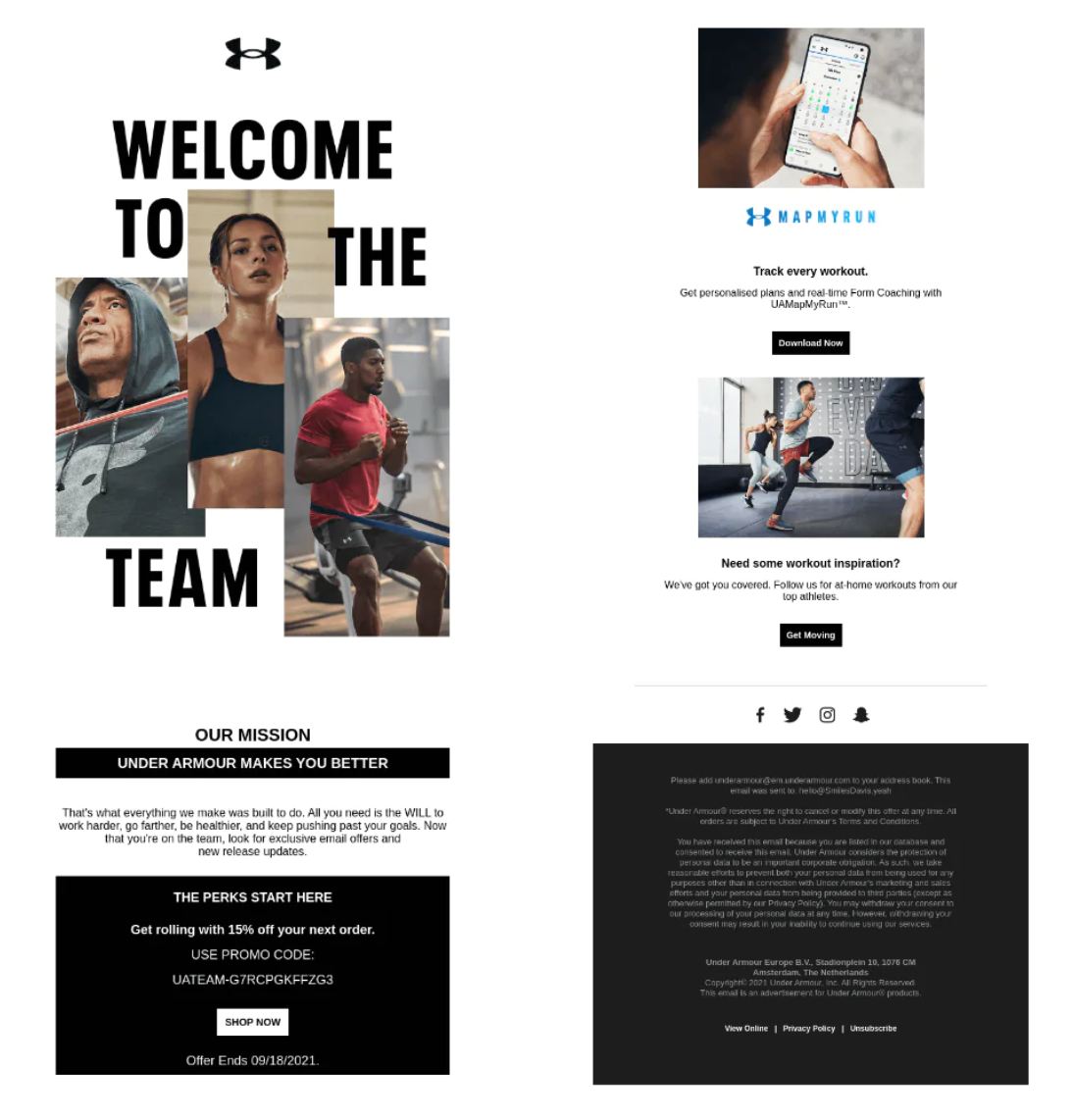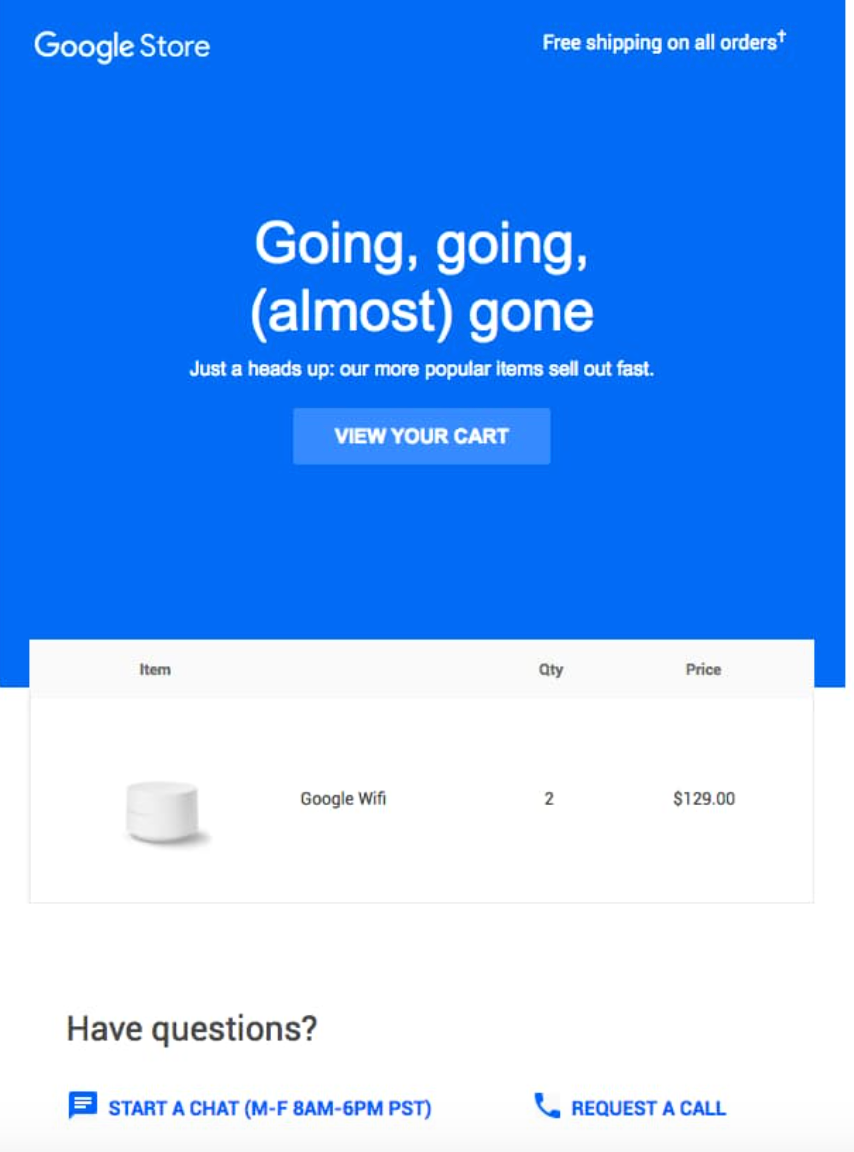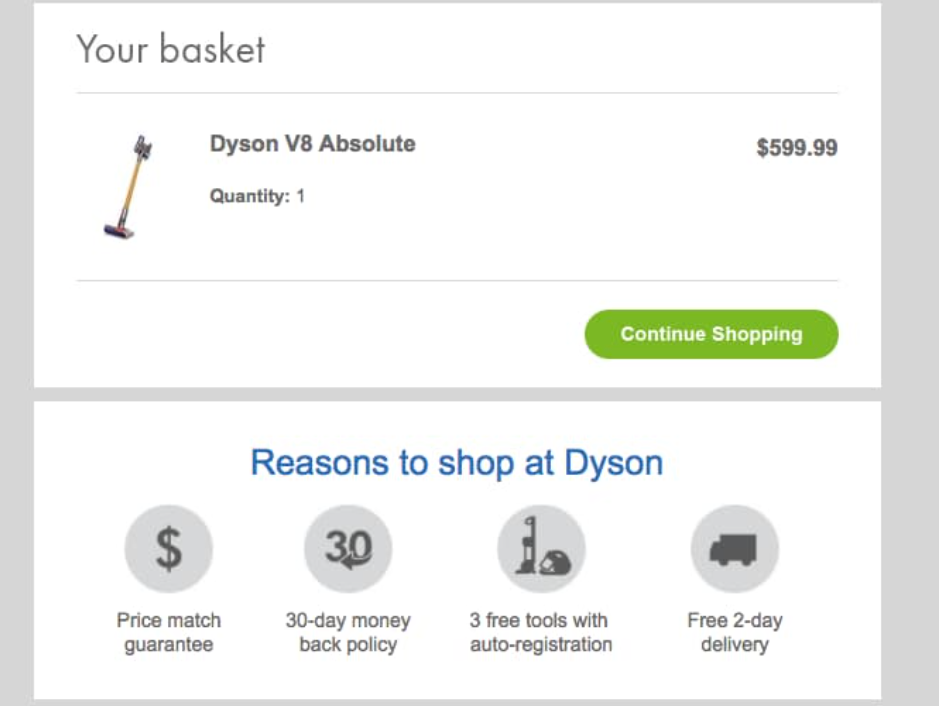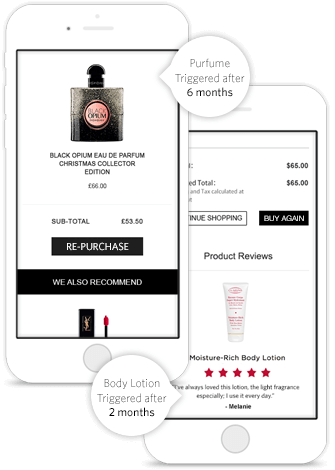Different Types of Email Marketing Campaigns to Try in 2023
We outline 5 different email campaigns to incorporate into your marketing strategy.
There’s a reason that email has become a staple of marketing campaigns. First, there are 4 billion people that use email each day (and that number is growing). Second, 77% of businesses surveyed said they saw an increase in email engagement in the past year.
Email is a golden channel for businesses as it opens a direct line of communication with customers. You can reach them wherever they are in the world, and continuously learn about their interests and behavior based on how they interact with your content. Which subject lines pique their interest? Which offers are they most likely to take advantage of? These are the answers you can find by analyzing, testing, and iterating on email campaigns.
Below, we’ve listed 5 different types of email marketing campaigns to incorporate into your strategy.
Top 5 types of email marketing campaigns (with examples)
Welcome emails
First up is the welcome email, or an introductory greeting to a customer. These emails generate 5x more clicks than regular email campaigns.
Welcome emails could be sent after someone creates an account for a faster checkout (e.g. with an e-commerce store), or after they sign up for a freemium version of a subscription. Successful welcome emails should confirm a recent action the customer has taken, reaffirm the value they’ll receive, and create an opportunity to continue the conversation (perhaps by linking a relevant article, complementary product, training videos – you name it).
One great example of a welcome email comes from Under Armour, the sports clothing brand. This email includes social proof (with photos of their famous brand ambassadors), a discount code for customers’ next purchase, links to download their app, or to browse through different workout routines. This email reflects Under Armour’s unique brand voice, and provides a clear path forward for people to continue engaging with their business. This last part is crucial – any email you send to customers should have a clear call-to-action that creates an opportunity to continue the conversation.

A welcome email sent from Under Armour
Another savvy strategy for welcome emails is to include a quick survey when applicable. For example, when onboarding a new customer to a platform, you can ask a few simple questions to get a feel for their interests, their intent, and how to personalize their experience for higher satisfaction rates.
Newsletters
Newsletters are sent out at regular time intervals – sometimes it’s a daily or weekly cadence, other times monthly or quarterly (it’s up to your discretion). Newsletters are an effective way to establish regular engagement with your customers and prospects; it’s an opportunity to relay product updates, upcoming sales, or personalized product recommendations. (In fact, we highly recommend personalizing every email interaction, but with the regular engagement you can get from newsletters, you can continuously tailor each send based on the data you collect.)
For B2B or SaaS companies, personalization can begin with demographic or firmographic data: what updates would be most relevant to an engineer versus a marketer? For media companies, you can create cohorts based on which articles people tend to engage with the most (e.g. do people prefer stories on sports and pop culture? Or do they engage more with world news and culinary recipes?). Personalization is essential to avoid your newsletter coming across as boring, irrelevant, or spammy (three qualities that are sure to have customers clicking unsubscribe).

An example of a daily newsletter from TheSkimm
Cart abandonment
Cart abandonment is a frustrating phenomenon because consumers come so close to converting. They have their item in the bag, but just can’t commit to the purchase (yet). It’s important for businesses to not leave that opportunity on the table. According to Gartner, e-commerce brands lose roughly $18 billion dollars a year from cart abandonment.
With cart abandonment, businesses have a crystal-clear picture of a person’s intent (and the exact product they’re interested in). Now, it’s just about nudging them to follow through. As a company, you can try offering a discount for the item, showing positive user reviews, or capitalizing on the fear of missing out. We have an example of that last tactic in the email below, sent from Google.

A cart abandonment email sent by Google
The reason that Google’s copy is spot-on is twofold: it simultaneously creates a sense of urgency (this item sells out fast) and establishes social proof (it’s a popular product). At the bottom of the email, Google also provides quick links to their customer support agents, to help answer any questions from on-the-fence shoppers. For cart abandonment emails, remember that you want to make checkout as simple as possible: provide a quick link to the item, reinforce why it’s a worthwhile purchase, and have support on standby to help answer any questions.
Another tip worth taking comes from Dyson. They include competitive differentiators in their cart abandonment emails: their reasonable pricing, money-back guarantee, free add-ons, and fast delivery.

An example of a cart abandonment email from Dyson
Post-purchase emails
After customers complete a purchase, they expect a post-purchase email for confirmation. This often includes tracking information if a product is being delivered, a summary of an order, or next steps on how to get started with a product (if signing up for a SaaS subscription, as an example).
But many savvy businesses have further leveraged these post-purchase emails to secure customer loyalty, repeat purchases, and even cross-sell. For example, businesses could include discounted links to items that would complement a person’s recent purchase (e.g. completing a furniture set). Or, they could ask customers to leave a review or rate their experience, which could then be showcased on the website to encourage more people to buy.

A post-purchase email that asks for a customer review/rating

A follow-up email asking if a customer wants to replenish their order or buy a complementary product
Some businesses also time follow-up emails when they suspect a customer may be running low on their initial purchase, asking if they would like to re-buy before running out.
Seasonal emails
Creating campaigns around seasonal events is a popular tactic, and with good reason. Often, different holidays present an opportunity to draw customers in with promotional offers (like widespread sales or personalized discounts).
The home decor brand One Kings Lane is a fantastic example of leveraging a seasonal campaign to better engage customers. They focused on different personality types that you may buy gifts for – the more food-focused “gourmet” persona, or the “modern bohemian.”

An email that offers purchase suggestions based on customers' likes and interests
By creating categories for their different products, they create a more seamless shopping experience for their customers. Not to mention, including user reviews is a great incentive to encourage people to buy.
Email marketing best practices
When building out your different email campaigns, there are a few best practices to keep in mind. From the impact of subject lines, to the necessity of personalization, we’ve laid out the top tips to ensure success when it comes to email marketing.
Create audience segments for personalization
Personalization is an absolute must to have customers engage with your email marketing, and avoid someone unsubscribing. When crafting out an email campaign, pay attention to the different audience segments or personas you’re targeting. (You can also create cohorts based on people’s shared behaviors.)
Here are a few ideas for segmenting emails to better personalize content:
Demographic data, like age, job, location.
High-value shoppers vs. churn risks
Interest (recent articles or products viewed)
New customers (e.g. could send milestone emails for onboarding, intro videos, etc.)
Focus on the subject line
Don’t underestimate the power of a good subject line. This copy is often the deciding factor in a person’s decision to open your email at all. One study found 47% of people are swayed to open an email based on its subject line (and 69% of people will mark an email as spam depending on this copy). To write a top-notch subject line, follow these tips:
Keep the copy concise and catchy. Some studies have found that shorter subject lines perform better. Also, if you’re offering a discount, include that in the subject line! Play around with your tone and style, depending on your brand voice.
Personalize whenever you can! Look to traits, past behavior, and known interests to craft a subject line that will appeal to that specific user.
Keep experimenting! Most marketing teams run A/B tests on email subject lines to help iterate on copy and content, and see which performs better.
Include CTAs
In the body of your email, always include a call-to-action. This is another element that you can A/B test to understand how CTA copy, placement, and design impact click rates. Experimentation is the best way to understand what works for your audience, but there are a few tried-and-true tips:
As its name suggests, your CTA should inspire action. Try to avoid passive voice in your copy, and be clear about what users are gaining from clicking (e.g. will this bring them to a full article? Take them to a product page where they can redeem a discount?)
Make sure your CTA is instantly recognizable. This is why call-to-actions are often placed inside “buttons” to help delineate it from the rest of the email.
Keep it short! Try and keep your copy to a few words, not a long-winded sentence.
Leverage automation
Automation is an essential tool for scaling your marketing efforts sustainably. With automation, you can automatically update audience lists to exclude people from campaigns based on real-time behaviors, like when a person converts, reads an article, signs up for a newsletter, etc.
Marketing automation has also been proven to cut operational costs, drive sustainable growth, and improve campaign ROI. To learn more about how to leverage and implement automation, check out our guide, 7 Ways to Automate Your Marketing Funnel.
Interested in hearing more about how Segment can help you?
Connect with a Segment expert who can share more about what Segment can do for you.